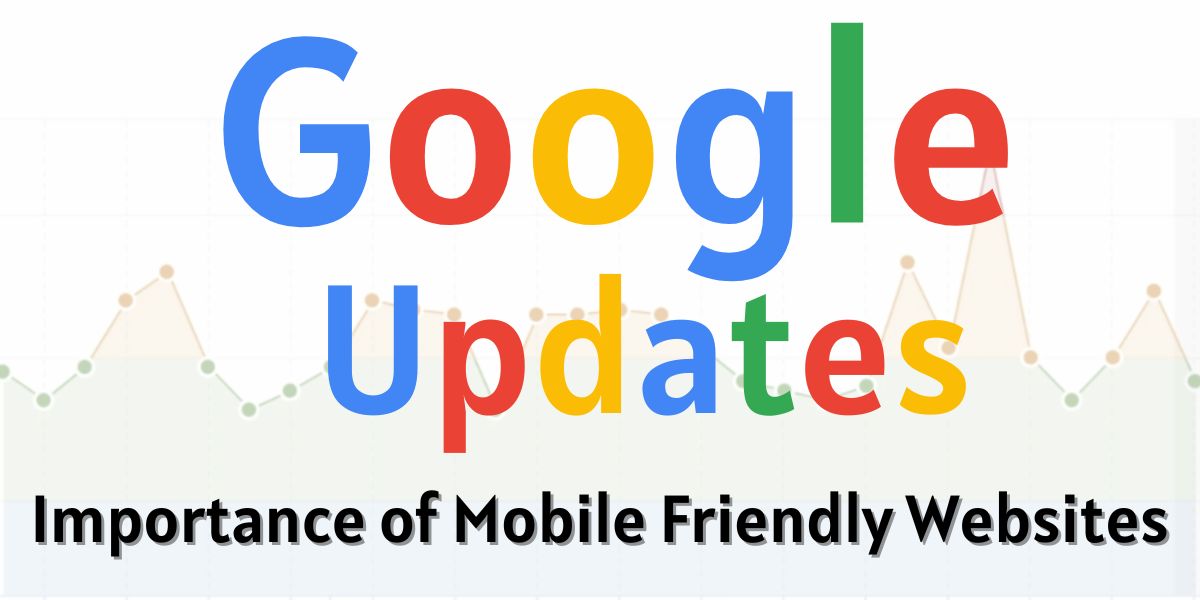Do you need a mobile-friendly website for your business? The answer is Yes.
More than 90% of people worldwide use mobiles and spend an average of three hours on a mobile screen. According to August 2022 reports, 62.06% of web traffic comes from mobile, and 61% of users do not return to the website if it is not responsive.
And you just got the answer to why your website must be mobile-friendly.
More than half of your potential customers won’t return to your website if it is not responsive. Mobile-friendly websites improve sales and conversions. A mobile responsive website allows users to interact and engage with your business across devices; it is convenient because no one can access a desktop 24/7.
Google November 2021 Core update
Still, thinking, Why are mobile-friendly websites important?
In the November 2021 core update, Google prioritized mobile indexing, where it read the robot meta tags, loading speed, URLs, and image quality of your site’s mobile versions. In this core update, desktop Search Engine Result Pages (SERPs) experienced more than 12% volatility, and Mobile SERPs were 23% more volatile.
Google put stress on the loading speed of mobile pages as a primary indicator while analyzing your website’s ranking. Hence, it is necessary because 94% of organic leads come from Google itself.
But what is a mobile-friendly website, and how do you make your website mobile friendly?
Let us discuss these things in detail in the next section and help you understand how mobile-friendliness works as a ranking factor for your brand website.
What Does a Mobile-Friendly Website Mean?
A mobile-friendly website is a responsive site across devices, including smartphones, tablets, and iPads. These websites are user-friendly and have easy navigation where users do not need to manually adjust their device settings or zoom in or out.
The website’s pages fit the screen, and the text is easily readable. Your website will automatically adjust to the screen size used by the user when it is mobile-responsive. Hence, the site will auto-optimize no matter what device the user utilizes.
Creating a mobile-friendly website decreases your bounce rate. Its usability means providing a good user experience, which directly affects the engagement on your site. Your business website reflects your corporation.
Thus, it is necessary to make it user-friendly and highly responsive.
Why are Mobile-friendly Websites Important for Your Brand?
Mobile-friendliness is a ranking factor in Google’s algorithm. Google ranks mobile responsiveness higher and rewards it by generating organic traffic. In 2016, Google made an official announcement that, beginning in May, they will bring an update to mobile search results and enhance the ranking signal effect to help users find mobile-friendly pages and websites.
Thus, every brand must check if its website is mobile-friendly to improve its performance and effectiveness.
Let us look at some of the pros and cons mobile responsive websites get when it comes to search.
- More than half of your potential users are using mobile devices or tablets. It allows users to access your website at any time. Hence, having a mobile-friendly website means more engagement.
- Google enhances the ranking of mobile responsive websites. It means your website will appear higher in search results. It improves your site visibility, which means that a mobile-friendly website is a way to get more leads and conversions.
- Mobile responsiveness improves the customer experience. The navigation becomes easier, the visuals are more appealing, and the text is easy-to-read and shareable. Hence, users get the best experience on your site.
- In 2017, mobile users overtook desktop users, which means most of your competitors already have mobile responsive websites. Thus, not creating a mobile-friendly site will pull you down from the competition.
How do I check if Your Website is Mobile-Friendly?
With regular updates and user requirements, it has become necessary to check if your website is mobile-friendly or not.
Here are some points through which you can check the mobile-friendliness of your site.
- Using a mobile-friendly test
- Using your browser to see if it’s mobile responsive
- Google PageSpeed Insights
- Utilizing Google console to check mobile usability
- Chrome DevTools
- GT Metrix
Google updates on Mobile Friendliness

-
An Update on Mobile indexing in November 2021
In November 2021 Update, it was recommended that websites check their mobile-first indexing with the help of Google Search Console. Hence, It means it was a technical change with Google crawling and indexing your websites.
The update was 23% volatile on mobile search results. Due to this, various sectors not following the mobile-first indexing parameters set by Google got hit.
-
Prepare for Mobile indexing in July 2020
As reported by July 2020 Update, Google recommended every website improve and update its mobile versions. It used the mobile version for indexing and ranking the sites in the search.
Thus, all websites had to put their primary content on the mobile version to avoid losing ranking and traffic.
The websites must ensure that Googlebot can read their robots meta tags, the website has no lazy loading speed, the images and videos have relevant placements, and the content has visibility on the mobile versions.
-
Mobile-first indexing in May 2019
In proportion to, May 2019 Update, Google announced, “Accordingly, we’re happy to announce that mobile-first indexing will be enabled by default for all new, previously unknown to Google Search, websites starting July 1, 2019. It’s fantastic to see that new websites are now generally showing users—and search engines—the same content on both mobile and desktop devices!”
Google said, “For older websites, we’ll continue monitoring and evaluating pages for their readiness for mobile-first indexing, and will notify them through Search Console once they’re seen as being ready.”
Also, websites were advised to keep a single URL for both desktop and mobile versions.
-
Mobile indexing first in November 2016
In November 2016 update, it was the first time Google announced Mobile indexing. The update focused on providing the best user experience on mobiles. Google recommended the websites make their primary content and markup equivalent on desktop and mobile.
Google announced, “To make our results more useful, we’ve begun experiments to make our index mobile-first. Although our search index will continue to be a single index of websites and apps, our algorithms will eventually primarily use the mobile version of a site’s content to rank pages from that site, to understand structured data, and to show snippets from those pages in our results.”
-
Rolling out a mobile-friendly update in April 2015
According to the April 2015 Google Update, the update affected the search rankings on mobile devices and search results in languages globally. Google applied this update to individual pages and not entire websites.
Google announced, “We’re boosting the ranking of mobile-friendly pages on mobile search results.”
It said, “ If your site’s pages aren’t mobile-friendly, there may be a significant decrease in mobile traffic from Google Search. But have no fear, once your site becomes mobile-friendly, we will automatically re-process (that is, crawl and index) your pages.”
These updates still affect the ranking of your websites if they do not follow the google instructions. Google improves the rankings if you have a mobile-friendly website for your brand.
Due to this, the traffic on your sites increases, which profits your business.
Closing Words
Thus, we must remember that our website delivers the best user experience on the desktop and mobile versions. Your website should follow Google instructions to avoid negative rankings.
Having a mobile-friendly website is not a choice. If you want to grow, you must have it.
AMICI Global Solutions designs a website that passes all the Google tests and delivers the best user experience. Our developers keep tabs on the newest updates and work accordingly to grow your business.
